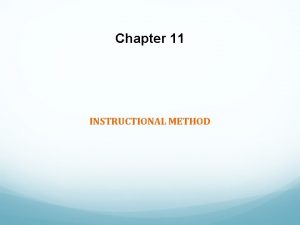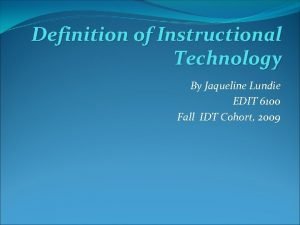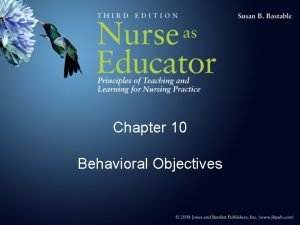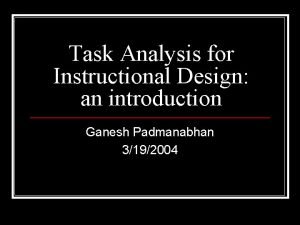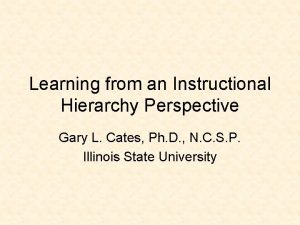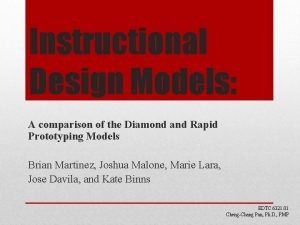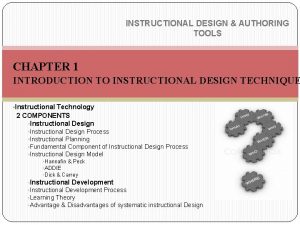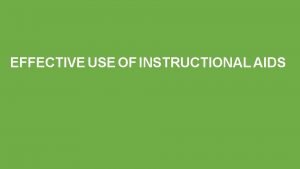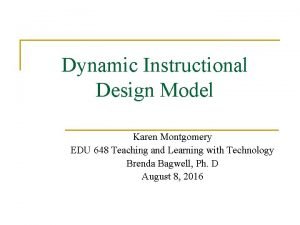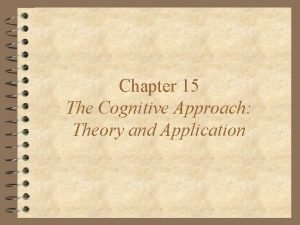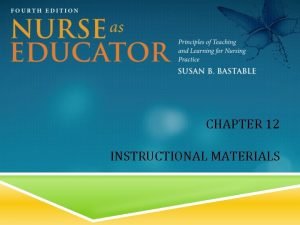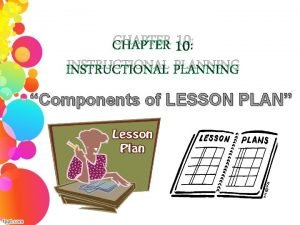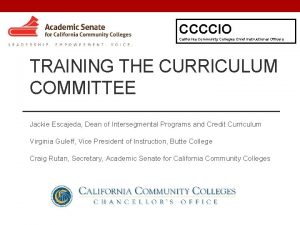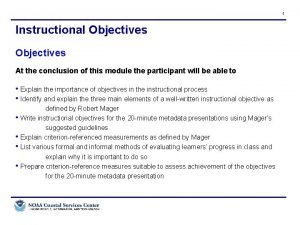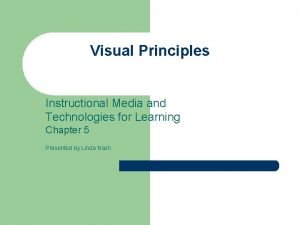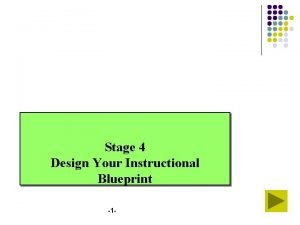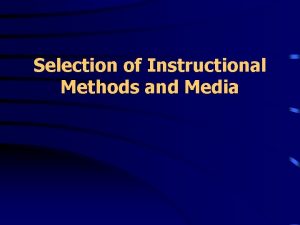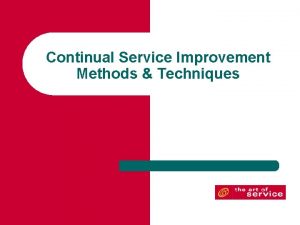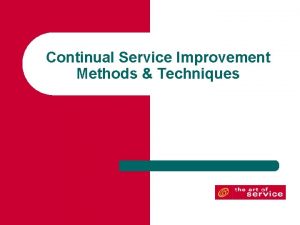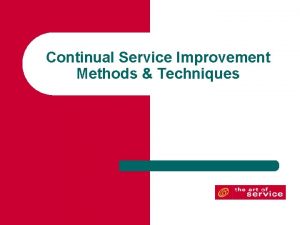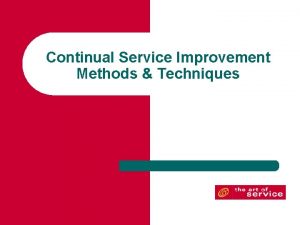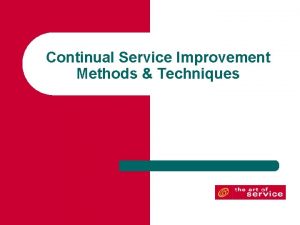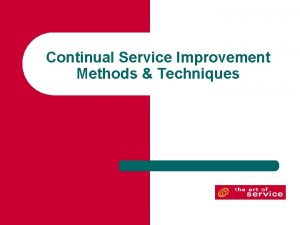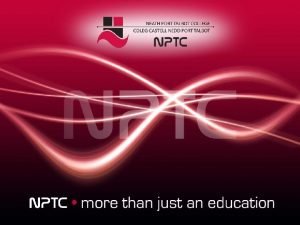Chapter 11 Instructional Methods Instructional Methods Definition Techniques





























- Slides: 29

Chapter 11 Instructional Methods

Instructional Methods • Definition – Techniques or approaches that the teacher uses to bring the learner in contact with the content to be learned

Instructional Methods • • • Lecture Group Discussion One-to-One Instruction Role-playing Self-instruction • • • Demonstration Return Demonstration Gaming Simulation Role-modeling

Lecture • Definition – An instructional method in which the teacher verbally transmits information directly to groups of learners for the purpose of education. It is highly structured.

Lecture • Advantages – Cost effective – Targets large groups – Useful for cognitive domain learning • Limitations – Not individualized – Passive learners

Group Discussion • Definition – An instructional method in which learners are together to exchange information, feelings, and opinions with each other and the teacher to achieve educational objectives

Group Discussion • Advantages – Stimulates sharing of ideas and emotions – Active learners – Useful for cognitive and affective domains of learning • Limitations – Shy member does not participate – Dominant member overwhelms the group – Highly diverse groups may have difficulty interacting

One-to-One Instruction • Definition – An instructional method in which the teacher delivers personally designed instruction to a learner.

One-to-One Instruction • Advantages – Active learner – Tailored to individual’s needs and goals – Useful for all three learning domains • Limitations – Can be expensive because it is labor intensive – Isolates learner

Demonstration • Definition – An instructional method in which the learner is shown by the teacher how to perform a particular skill

Demonstration • Advantages – Previews exact skill for the learner – Useful for psychomotor domain learning • Limitations – May be expensive because all learners need to easily visualize skill. This requires use of technology or small groups.

Return Demonstration • Definition – An instructional method in which the learner attempts to perform a skill with cues from the teacher as needed

Return Demonstration • Advantages – Active learner – Individual guidance – Useful for psychomotor domain learning • Limitations – Viewing individual performance is labor intensive

Gaming • Definition – An instructional method requiring the learner to participate in a competitive activity with preset rules to achieve an educational objective

Gaming • Advantages – Active learner – Perceived as “fun” by many learners – Useful for all three domains of learning • Limitations – Too competitive for some learners

Simulation • Definition – An instructional method requiring creation of a hypothetical or artificial experience to engage the learner in an activity that reflects real-life conditions without the risk -taking consequences of an actual experience

Simulation • Advantages – Active learners – Practice “reality” in a safe setting – Useful for cognitive and psychomotor domains of learning • Limitations – Labor intensive – Costs of equipment

Role-Playing • Definition – An instructional method where learners participate in an unrehearsed dramatization to elicit their feelings to achieve affective domain objectives

Role-Playing • Advantages – Active learner – Develops “understanding” of others – Useful for affective domain learning • Limitations – Learner can exaggerate or underdevelop the role

Role-Modeling • Definition – An instructional method in which the teacher “models” or exhibits behaviors that the learner may imitate or adopt as he or she is socialized into a role. Learning from role-modeling is called identification and emanates from socialization theories.

Role-Modeling • Advantages – Helps with socialization into role – Useful for affective domain learning • Limitations – Requires rapport between teacher and learner

Self-Instruction • Definition – An instructional method to provide activities that guide the learner in independently achieving the educational objectives

Self-Instruction • Advantages – – Self-paced Cost-effective Consistent Useful for cognitive domain learning • Limitations – Learner may procrastinate – Requires literacy

Factors in Selection of Instructional Methods • What are the predetermined objectives? • What are the characteristics of the targeted audience? • What resources are available? • What are the teacher’s strengths and limitations?

Evaluation of Instructional Methods • Did learners achieve their objectives? • Was the activity accessible to targeted learners? • Were available resources used efficiently? • Did the method accommodate the learner’s needs, abilities, and style? • Was the approach cost-effective?

Creative Techniques to Enhance Verbal Presentations • • Enthusiasm Humor Risk-taking Drama Problem-solving Role-modeling Anecdotes Technology

General Principles for All Teachers • • Give positive reinforcement. Project acceptance/sensitivity. Be organized, give direction. Elicit and provide feedback. Use questioning. Know your audience. Use repetition. Summarize key points.

Instructional Settings • Healthcare setting • Health-related setting • Nonhealthcare setting

Sharing Resources Nurses in each of the setting types can establish a health education committee to coordinate health education programming, ensure effective use of resources, and avoid duplication of efforts.
 Instructional methods definition
Instructional methods definition Les fonctions techniques et les solutions techniques
Les fonctions techniques et les solutions techniques Definition of instructional technology
Definition of instructional technology Functions of school multimedia centre
Functions of school multimedia centre Instructional materials definition
Instructional materials definition Instructional software definition
Instructional software definition Indirect wax pattern
Indirect wax pattern Task analysis instructional design
Task analysis instructional design Computer sic
Computer sic Explain the different objective of micro teaching
Explain the different objective of micro teaching Maximizing instructional time in the classroom
Maximizing instructional time in the classroom Instructional hierarchy
Instructional hierarchy Marzano 9 instructional strategies
Marzano 9 instructional strategies Comparing instructional design models
Comparing instructional design models Instructional design authoring tools
Instructional design authoring tools Marzano generating and testing hypotheses
Marzano generating and testing hypotheses Instructional procedures examples
Instructional procedures examples Instructional aid examples
Instructional aid examples Dynamic instructional design
Dynamic instructional design Thought stopping
Thought stopping Visual instructional materials
Visual instructional materials Self-instructional training example
Self-instructional training example Instructional materials examples
Instructional materials examples Components of an instructional plan
Components of an instructional plan Ccccio conference
Ccccio conference California community college chief instructional officers
California community college chief instructional officers Weakness of assure model
Weakness of assure model Conclusion of instructional objectives
Conclusion of instructional objectives Visual instructional media
Visual instructional media Instructional design blueprint template
Instructional design blueprint template
